Gender Roles And Stereotyping In ‘To Kill A Mockingbird’
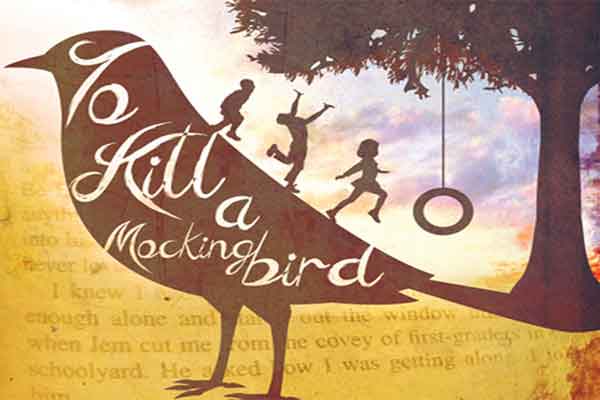
From racism to gender roles, To Kill a Mockingbird by Harper Lee comments on the prejudices intertwined in the fabric of Southern society in the USA during the 1930s, in the aftermath of the Great Depression . This iconic novel is celebrated even today as an example of great American literature. Lee creates characters brimming with complexity, personality and most importantly, human flaws and struggles.
The main character around which the novel revolves is a six-year-old girl: Jean Louise Finch, mostly known as Scout. Scout grows up in the small town of Maycomb, a fishbowl where everyone knows everyone and privacy and secrets are unheard of. She is a ‘tomboy’, always in overalls and muddy shoes, spending the majority of her time playing with her older brother, Jem, and friend, Dill.
She is fierce and tough, and sees the world in black and white. Jem, four years her senior, is more adept at spotting the grey areas. Both children have been raised by their father, Atticus, a forthcoming lawyer with a strong sense of morals and great respect for his two children.
When I read the novel for the first time, I was immediately intrigued by Lee’s depiction of gender roles and gender prejudice within Maycomb’s society. The story is narrated by both young Scout and an older, more mature Scout reflecting on her childhood. It covers a span of three years and follows the children through turbulent and confusing times in their lives.
Accustomed to a quiet and relatively monotonous routine, Scout finds adjusting to the changes in the world around her based on new events in Maycomb difficult. This bildungsroman, a coming of age novel, makes interesting observations about many aspects of Scout’s life and surroundings, but perhaps the most astute are about her existence as a young girl expected to conform to societal standards for women. These standards are best illustrated by the personalities and behaviours of the women in the novel.
Scout is used by Lee to demonstrate how societal expectations of feminine behavior are pushed upon girls right from a young age. She is described as a tomboy, and does not fit the stereotype for young, gentle and petite girls. She is tough and playful and spends her time outdoors instead of behaving in the expected ‘ladylike manner’.
She initiates brawls, curses with excitement and makes curt and sarcastic comments about adults. All in all, she comes across as a likeable and high-spirited character, who readers can easily empathize with.
Scout is used by Lee to demonstrate how societal expectations of feminine behavior are pushed upon girls right from a young age.
Scout doesn’t conform to gender roles, and is upset when she is made to. As she grows up, she has to begin attending the local school. On her first day of school she is forced to wear a dress, much to her displeasure. She feels uncomfortable in it, and unlike herself. However, she has no choice as it was deemed the appropriate clothing for girls.
She is always in the company of Jem and Dill, and as the children grow up, she finds herself on the receiving end of comments from the boys such as, “Scout, I’m telling you for the last time, shut your trap or go home-I declare to the lord you’re gettin’ more like a girl everyday”. When she warns her brother against sneaking out at night and accepting foolish dares, he retaliates with comments such as the one above, fueled by gender prejudices insinuating that girls are weak and easily scared.
This ensures that she is silent and doesn’t voice any more concerns lest she is forbidden from joining their adventures in the future. Over time, she is distanced from the two boys, who begin to exclude her from their games and spend their time together. This brings her into closer contact with the other strong female character of the book, Miss Maudie Atkinson.
Miss Maudie is the Finch’s neighbour, and becomes Scout’s friend when she is left out of games by Jem and Dill. Miss Maudie is continuously optimistic, and sees the bright side of every situation. When her house is half burnt down in a fire, she comments, “Always wanted a smaller house, Jem Finch. Gives me more yard. Just think, I’ll have more room for my azaleas now!” She faces every situation with practicality and unwavering positivity.
When she is insulted by foot-washing Baptists for gardening, she quotes the Bible right back at them and wears a “grin of the uttermost wickedness”. She is a strong female figure Scout respects and trusts for advice, unlike other ladies in the town, who spend their time discussing others’ lives and problems.
Also Read: A Feminist Reading of Virginia Woolf’s Orlando: A Biography
Lee does not give her a husband and children, which adds to her independence and confidence as an individual, instead of as a character in a familial setting. Throughout the novel, she helps Scout understand their world better, and does not treat her as a naïve child. When discussing religion and Christianity with Scout, she tells her, “Sometimes the Bible in the hand of one man is worse than a whiskey bottle in the hand of – oh, of your father”.
Scout confides in her and values her opinions, and Miss Maudie is almost a mother figure in Scout’s life. Scout reflects upon her relationship with Miss Maudie, saying, “She had an acid tongue in her head” but “Jem and I had considerable faith in Miss Maudie” as “she was our friend”.
While being optimistic and kind, Miss Maudie is not afraid to voice her beliefs or move against the tide of popular opinion. At a ladies’ tea, she is upset by the women being intolerant and racist towards their black help, and snaps at one of the women complaining about her cook.
Scout recollects that, “When Miss Maudie was angry her brevity was icy. Something had made her deeply angry, and her grey eyes were as cold as her voice”. Miss Maudie is disgusted by the prejudiced opinions of people, and does not subscribe to them. She also supports Scout and helps her to stand up against forces that try to push Scout into stereotypical assumptions and judgments about others.
In contrast to Miss Maudie, Scout’s Aunt Alexandra represents the ideal Southern family-oriented woman. She is at the other end of the spectrum, with her conventional beliefs and constant disapproval of Scout’s tomboyish behavior. She complains about Scout wearing overalls to Atticus who is frustrated by her frequent criticism, and Scout describes the exchange as “The only time I ever heard Atticus speak sharply to anyone”.
Scout does not understand her Aunt’s obsession with her clothing. Aunt Alexandra repeatedly tells her that she cannot be a lady if she does not dress like one, and that she should engage in more ‘girly’ activities. Aunt Alexandra also says that as a girl, Scout should “be a ray of sunshine” in Atticus’s life, reinforcing the patriarchal expectation that all girls must be positive and happy continuously and brighten up the lives of their husbands or fathers.
Aunt Alexandra repeatedly tells her that she cannot be a lady if she does not dress like one.
She enforces this and tries to get Scout to conform to gender roles despite seeing how resistant she is to them. She takes part in all the ‘right activities’, such as hosting missionary circles, joining clubs and gossiping with a passion. She is portrayed as judgmental and is quick to create prejudices in her mind about others.
Scout reflects upon her Aunt’s attitude and says, “When Aunt Alexandra went to school, self-doubt could not be found in any textbook, so she knew not its meaning”. Aunt Alexandra takes it upon herself to exert a ‘feminine influence’ on Scout’s life as she grows, and Scout resents her interference. She does not support or guide Scout as Miss Maudie does, and tries to make her change.
While Scout tries to remain indifferent towards her Aunt and her efforts, at a point in the novel, she begins to respect her. When dealing with a crisis during her ladies’ tea, Aunt Alexandra regains her composure and handles it gracefully, resulting in Scout remarking, “If Aunty could be a lady at a time like this, so could I”.
As we watch Scout mature and gain a deeper understanding of the adult world, we see how her environment influences her opinions. The roles of Miss Maudie and Aunt Alexandra are the most significant in Scout’s upbringing and perspective of the world. To Kill a Mockingbird covers several themes that are challenging and often uncomfortable to encounter and explore, such as racism and loss of innocence.
However, it is regarded as timeless for a reason- Lee’s skilful character development and narration creates a powerful and relatable story, one that is both informative and thought provoking. As a feminist, seeing its depiction of sexism and gender stereotypes was interesting as it helped me gain a better understanding of the manifestations of conventional ideals in a young girl’s life.
Also Read: Book Review: The Handmaid’s Tale by Margaret Atwood, A Visceral Experience
Featured Image Credit: Adarsh Badri
A student at Ashoka University, Tara loves poetry, impassioned conversation and brewing warm cups of tea.
A well written article, thank you for sharing. However, I am a little surprised that you gave no mention to her most prevalent female role model Calpurnia! Calpurnia raises Scout in a fashion that contrasts the daintiness of ‘Southern Belles’ such as Aunt Alexandra and Miss Caroline.
Comments are closed.

Related Posts
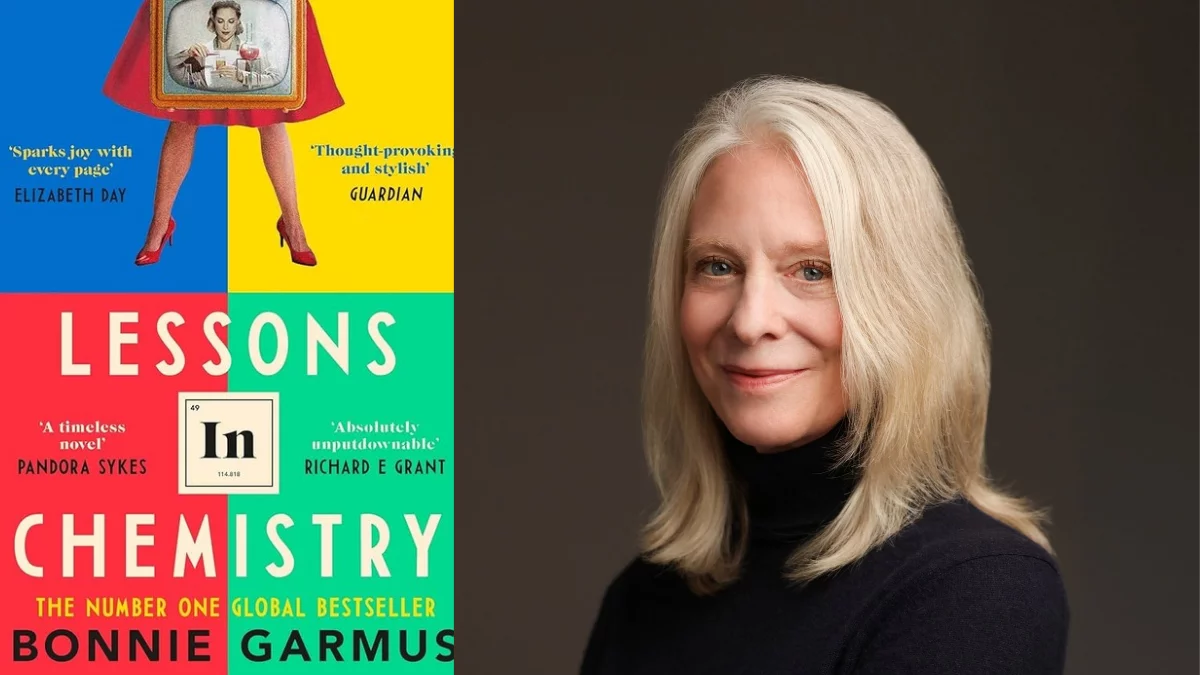
‘Lessons In Chemistry’: Blending Science And Storytelling
By Treya Sinha
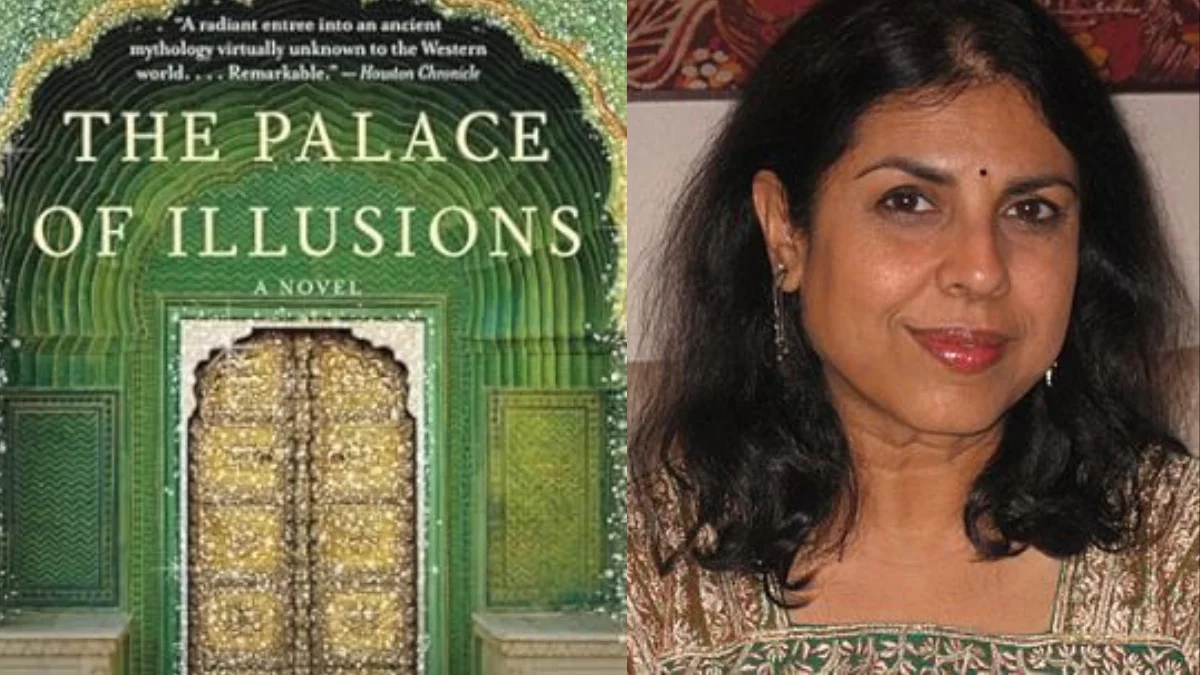
Reclaiming Panchaali: A Feminist Reimagining Of The Mahabharata In ‘The Palace Of Illusions’
By Iti Dewangan
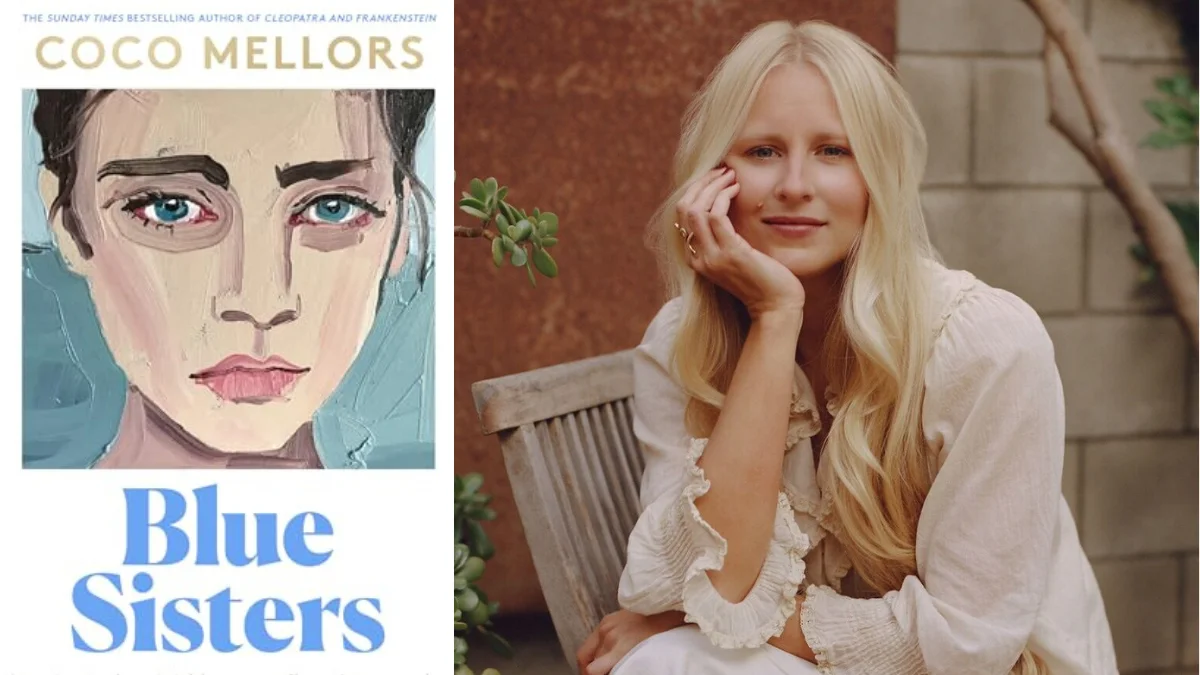
‘Blue Sisters’: Inside Coco Mellors’ Literary Empire


To Kill a Mockingbird
Ask litcharts ai: the answer to your questions.
Good, Evil, and Human Dignity
To Kill a Mockingbird follows Scout , a precocious six-year-old, over the course of three years as she begins to grow, and in the process, bears witness to the trial of Tom Robinson , a black man wrongly accused of raping a white woman. As a child, Scout has set ideas regarding what’s good and what’s evil, but throughout the novel, her father, Atticus , gradually begins to encourage her to see that the world…
Throughout To Kill a Mockingbird , Scout witnesses many different types of prejudice—and even promotes these attitudes herself—including classism, sexism, and racism. Regardless of the type of prejudicial worldview, each one treats people as stereotyped groups, demands conformity, and doesn’t give any credit to individuals. Over and over again, To Kill a Mockingbird illustrates how prejudice can be closed-minded and dangerous, as well as seemingly benign—but in all cases, it’s ridiculous and misguided.
Though racism…
Over the course of the novel’s three years, Scout , Dill , and Jem grow up both physically and mentally. They begin the novel with a firm and uncomplicated idea of what’s good and what’s bad, but by the end of the novel, they’ve all lost their innocence and have come to a more complex understanding of how people and the world work. In particular, having Scout, whom the reader meets at age six, narrate…
Many people in To Kill a Mockingbird confuse courage with strength and believe that courage is the ability or willingness to use strength to get one’s way. However, the novel makes it abundantly clear that this understanding of courage is immature at best and is possibly wrong altogether. Instead, the novel proposes that courage isn’t about winning. Instead, it’s about thinking about something and choosing to do what’s right, even if doing so is difficult…
Small Town Southern Life
Maycomb is a small town with all the stereotypical characteristics of small-town life. Most notably everyone knows everyone else’s business, which leads mostly to endless and generally harmless gossip—but more importantly, it makes the community extremely intimate and close-knit. Throughout the first part of the novel, these qualities cause Scout and Jem to believe that Maycomb is nothing more than an insular, safe, intimate community. While they’re not entirely wrong about the truth of this…

In order to continue enjoying our site, we ask that you confirm your identity as a human. Thank you very much for your cooperation.
To Kill a Mockingbird: Discrimination Against Race, Gender, and Class
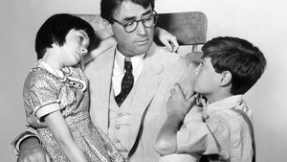
Harper Lee’s classic novel To Kill a Mockingbird centers on a young girl named Jean Louise “Scout” Finch. Her father Atticus Fincher, a lawyer, takes a case to defend a black man accused of raping a white woman.
Nelle Harper Lee was born on April 28, 1926 in Monroeville, Alabama. Lee drew inspiration from her own childhood: like Scout, Lee’s father was also a lawyer. Although the novel is not autobiographical, the novel does share some similarities to Lee’s life. While the novel is set in the 1930s, the novel does touch upon issues relevant to Lee’s time. According to an interview, Lee took about two years to write To Kill a Mockingbird ( The Bluegrass Special ). Prior to the novel’s publication, the Civil Rights movements was in motion. During this decade, the Civil Rights Movement brought success, seeing “the first major victories for civil rights in the Supreme Court” (Vox). Among the many events, including Brown vs. Board of Education , the Montgomery Bus Boycott, a protest that later concluded in declaring segregated laws of Montgomery and Alabama buses as unconstitutional, and after a group of nine African American students were denied entry to Little Rock High School, President Eisenhower sent federal troops to integrate the school. In addition, since the novel is set in the 1930s, the Great Depression left many families impoverished, which we see in the Cunninghams and Ewells.
The novel is told from Scout’s perspective; through Scout, we the readers witness the social construction of race, class, and gender. The novel continues to be taught in classrooms due to its depiction of themes about race, morality, and innocence. While the novel depicts a discrimination against race, To Kill a Mockingbird also depicts a discrimination against gender and class.
In the novel, Scout and Jem, Scout’s older brother, are looked after by Calpurnia, their black housekeeper. Although Scout shares her differences with Calpurnia, Calpurnia serves as a mother-figure for the children. She’s revered and respected by Atticus, who acknowledges that Calpurnia is educated. Yet, it is speech that separates the black community from the white. When Scout and Jem attend Calpurnia’s church, Scout notes that Calpurnia adopts a different speech when she communicates with her fellow churchgoers: “That Calpurnia led a modest double life never dawned on me. The idea that she had a separate existence outside our household was a novel one, to say nothing of her having command of two languages” (143). Although Scout and Jem struggle with the idea that Calpurnia speaks two different languages, Scout respects Calpurnia for mastering both languages since she asks to visit Calpurnia at her home.
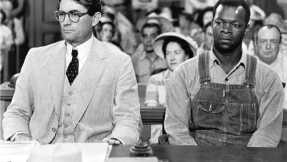
The trial of Tom Robinson serves as the pivotal and highly-anticipated moment in the novel. Tom Robinson is accused of raping a young white woman named Mayella Ewell. The Ewell family lack education and money, representing the lower class. As the oldest child, Mayella becomes a mother figure for her younger siblings. In addition, the novel implies that Mayella is involved in an incestuous relationship with her father. While Atticus represents justice and morality, Bob Ewell represents ignorance and racial prejudice. After all, Bob Ewell’s full name is Robert E. Lee Ewell, named after the general who commanded the Confederate army. The name plays a significant role considering the Confederate army represented southern slave states and their right to expand slavery, thereby reinforcing Bob Ewell’s racism.
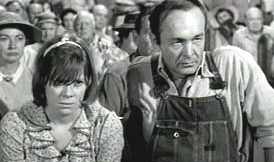
For Tom Robinson, we quickly learn that he is convicted based purely on the color of his skin. Earlier in the novel, Scout relates that Atticus views the Ewell family as “the disgrace of Maycomb” (33). However, because the Ewells are a white family, they hold a higher social status. During the trial, it is implied that Mayella seduces Tom Robinson, and her father, Bob Ewell, observes in horror that his daughter would share intimate feelings for a black man. In addition, Bob Ewell’s reaction to his daughter kissing Tom Robinson shows the fear of miscegenation. Atticus, however, strives for justice. Atticus explains the ugly truth to Jem and Scout: “In our courts, when it’s a white man’s word against a black man’s, the white man always wins” (251-252). Atticus shows disgust with white people taking advantage of a black person’s ignorance” (252). Furthermore, Atticus makes it clear to his children that racism exists:
“As you grow older, you’ll see white men cheat black men every day of your life, but let me tell you something and don’t you forget it—whenever a white man does that to a black man, no matter who he is, how rich he is, or how fine a family he comes from, that white man is trash” (252).
Along with race, Lee discusses gender throughout her novel. Having lost her mother at an early age, Scout does not fret over her lack of femininity; however, her Aunt Alexandra does not approve of her unladylike behavior. While Atticus shows indifference towards Scout’s tomboy-ish behavior, Aunt Alexandra makes it her mission to decimate Scout’s tomboy tendencies.
Scout shares resentment towards being called a “girl,” always taking the word as an insult. Because Aunt Alexandra is staying for a given amount of time, Scout, to her dismay, realizes she must follow her aunt’s rules. “I felt the starched walls of a pink cotton penitentiary closing in on me, and for the second time in my life I thought of running away. Immediately” (155). The preceding quote expresses Scout’s feeling and attitude towards femininity. By describing femininity as a penitentiary suggests that girlhood is like a prison that keeps her captive, suffocating her.
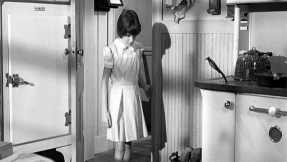
At one point in the novel, Aunt Alexandra hosts her Missionary Society meeting; one of the women, Mrs. Grace Merriweather, expresses concern regarding the Mrunas, an African tribe. While this moment is brief, the discussion shows the hypocrisy of these women: the ladies of the Missionary Society pity the Mrunas, yet they do not share the same compassion towards the African American community in their own town. At first, Scout helps Calpurnia serve the ladies, but Aunt Alexandra interjects and tells Scout to sit with them, which Scout remarks is “part of her campaign to teach me be a lady” (262).
After the jury convicts Tom Robinson, Jem is distraught and wonders why good people, “like us and Miss Maudie,” the Finches nearby neighbor, don’t “serve the jury” (252). Atticus explains that Miss Maudie cannot serve because she is a woman; since the jury consisted of men, this reveals gender discrimination. Like the African American community, the women in Maycomb suffer from inequality.
On the first day of school, Scout clashes with her teacher Miss Caroline. During lunchtime, Miss Caroline offers money to one of her students, Walter Cunningham. When Walter refuses the money, Scout explains to Miss Caroline that the Cunninghams suffer from poverty. Scout narrates a time when Atticus served as the Cunningham’s lawyer, and having no money to repay Atticus, the Cunninghams pay Atticus in the form of stovewood and hickory nuts.
Later in the story, Jem invites Walter to their house for lunch. While eating their meal, Walter pours molasses “on his vegetables and meat with a generous hand” (27). This act not only causes Scout to remark and embarrass Walter, but also shows a difference in status between the Cunninghams and the Finches.
After lunch, Scout returns to her class and notices Miss Caroline “standing in the middle of the room, sheer horror flooding her face” (28). The scandal reveals itself: a boy known as Burris Ewell has lice, or more specifically “cooties.” While Miss Caroline is sickened by Burris’s hygiene, the rest of the class does not seem perturbed. In fact, one of the students, Little Chuck, states “There ain’t no need to fear, a cootie, ma’am. Ain’t you ever seen one? …you just go back to your desk and teach us some more” (28). Scout observes Burris, describing his physical characteristics: “his neck was dark gray, the backs of his hands were rusty, and his fingernails were black deep into the quick” (29). Burris Ewell’s physical description reveals his low status and poor living condition. The Ewells, however, share similarities with the African-American community: they lack education and money. Although the Ewells lack education and money, they hold a higher elevation because they are white.
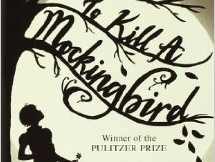
Winner of the Pulitzer Prize, To Kill a Mockingbird allows readers to witness the racial tensions in the South. In 1962, the novel was adapted into a feature-length film, starring Gregory Peck as Atticus. After the novel’s publication, Lee retreated from the spotlight. In recent news, however, an unpublished manuscript surfaced as the sequel to To Kill a Mockingbird , leaving many rejoicing or protesting against the publication. Whether the planned sequel is published or not, we can agree that To Kill a Mockingbird will continue to stand the test of time. The novel is rich, dealing with themes about racism and presenting an unjust world. Lee’s novel depicting the injustices in race, gender, and class is a call to take action, telling her readers to embrace change that benefits others and pursue justice and equality.
Lee,Harper. To Kill a Mockingbird . New York: Harper Perennial Modern Classics, 2006. Print.
“ To Kill a Mockingbird turns 50.” The Bluegrass Special . Feature, 2009. Web.
Vox, Lisa. “Timeline of the Civil Rights Movement, 1951-1959.” About.com . About Education, n.d. Web.
What do you think? Leave a comment .
Want to write about Literature or other art forms?
Receive our weekly newsletter:


49 Comments
A fantastic article, you show your knowledge of To Kill A Mockingbird with great depth.
You know what’s weird? When I first read this at age twelve, I hated Jem. I remember liking the book, and when everyone talked about how it was the American novel of the century, I thought to myself, “But how could you like a novel where one of the protagonists is more irritating than an eyelash stuck in your contact lens?”
I love how Lee puts the confounded confusions of adulthood into simple thinking when viewed through the eyes of a child.
I find it kind of boring. It’s not really going anywhere, and it seems like some parts of the book are random and have nothing to do with the rest of the story.
The characters are so real. Even when you hate them, no one in this book is one-dimensional.
It’s a classic book for good reason.
I liked the feel of being able to look through a child’s eye and see their naive and innocent look of the world. It makes you think about what you would do being in their shoes and you realize they wouldn’t know what the right or wrong was, until being told.
I think it is incredibly difficult to capture the imagination of a child. The author has done so flawlessly. I found myself growing up with Scout.
Well done! This is such a thorough analysis I love it!
I cannot count the numerous times I constantly found myself laughing out loud, gasping in shock or smiling to myself whilst reading this book.
Possibly one of the most perfect books ever written. I feel like if there were a checklist for everything a great novel should be, this would get a perfect score.
I am certain I read this book at some point previously in my life, but on my recent vacation to sublime Nicaragua, I decided to take a copy with me. What a revelation! I just can’t get over how funny it is.
watch the movie PLEASANTVILLE after reading this novel. Conger
You get such a sense of place from Lee’s masterful descriptions.
This is a truly amazing book. The writing and story telling are amazing and the characters bring the story to life.
A wonderful book, a true classic. This book says a lot about the nature of good and evil in the everyday man.
this book has told me in a few passages what years and years couldn’t possibly have..the simplicity,and honesty of this novel is exquisitely beautiful. /ananya
So many great characters and subtle lines that make you think. I guess I should have read this in English class way back when.
Good article, with an acute analysis of the key themes in the book. I was definitely intrigued by Atticus’s character and how he himself seems to have no class, gender or race prejudice – his sensitivity and awareness is commendable and also in itself breaks gender preconceptions.
I recently watched the movie version for a film course discussing racism in hollywood; I definitely need to read the novel again.
An impressive and touching book that I didn’t want to put down unless I absolutely had to.
A great overview of three of the novels most compelling themes!
One of a kind and my all time favorite ever!
Great article to read, as we await the sequel!
Parts of the book were uncomfortable to read, but it was a good example of the people were treated back then. And I like this article.
I read Mockingbird for the first time when I was seven years old. It was a tough read for one so young and I certainly didn’t recognize the themes that Harper Lee laid out in the novel, but I identified with the character of Scout – I was a tomboy with an older brother with whom I fought but who was often times my protector. I saw the film some years later and it was at that time that I began to grasp the tenets of this simple, yet beautifully written story. Race, gender and class discrimination are all thoroughly examined in this novel and the author of this article has revealed them in detail with the most exemplary examples from the text. Growing up in the South, I was surrounded by race, gender, and class bias. Those who live there, or who have lived there for any amount of time, know that things change slowly in that neck of the woods. Although my childhood began after the Civil Rights Movement started and was roughly thirty to forty years after the setting of the novel, discrimination still remained, and remains to this day, a part of everyday life there, as it does in many areas of the country. I read Mockingbird every few years and learn something new from it with each reading. Until I was an adult, I didn’t realize the statement it made regarding mental health, which is not touched on in this article but I believe is another extremely important message in this book. When I see Mockingbird on high school required reading lists, particularly in the South, I am hopeful – hopeful that the Atticus Finches out there begin to outnumber those who would value a person based on the color of his/her skin or the diminished capacity of his/her mind. I saw Robert Duvall at a restaurant last week and I had to stifle the urge to go up to him and say, “Hey, Boo.”
A great analysis on a great novel. Really displays the harsh reality of the world.
Classic. All classics come with the notion that you either love it or hate it.
The inconvenient reality of society depicted with great finesse. I look forward to reading ‘To Set a Watchman’.
who ever wrote this is a big fagot. nah I’m just joking with you
that you forgot the URL address
I would like to read it..where I can get a free copy?
I would’ve liked it if I had chosen to read it in my own accord… I read it in school and it sucked.
When writing an essay on women discrimination, writers should look at the history. Their argument should be based on verifiable statistics. The information should be discussed in the concept of social economic consequences. Discrimination against women is one of the major societal problems over time now. It has brought major impact learning, domestic life, and community institutions as well. This challenge has been an issue globally. There has been a perception that women belong to certain professions for example; in nursing, teaching, and secretarial work.
This was beautifully written and it really helped me write my paper!!
This is great! Thank you for writing this!
who is the author of this article To Kill a Mockingbird: Discrimination Against Race, Gender, and Class
I love my life.
I really love my life.
Guys need help with this question; demonstrate how does bias and prejudice in ”To kill the mocking bird does frastrate philosophical investigation?
excuse you, the quotes you pulled aren’t even on those page numbers: I’m not even sure if they’re in the book! You didn’t use TKAM to do your research and I hope you burn in hell
pee is stored in the balls
the artikle was gut, but rassism is bad. LG
stop cappin
A good essay on a memorable book and movie.
This is a primer on To Kill a Mockingbird. It would have been nice, however to cover the Radleys.
Leave a Reply Cancel reply
Save my name, email, and website in this browser for the next time I comment.
Prove you are human, type c a t s in singular form below:

Home — Essay Samples — Literature — To Kill a Mockingbird — The Prejudice of Race, Gender and Social Class in the Novel “To Kill a Mockingbird”
The Prejudice of Race, Gender and Social Class in The Novel "To Kill a Mockingbird"
- Categories: Prejudice To Kill a Mockingbird
About this sample

Words: 745 |
Published: Mar 1, 2019
Words: 745 | Pages: 2 | 4 min read

Cite this Essay
Let us write you an essay from scratch
- 450+ experts on 30 subjects ready to help
- Custom essay delivered in as few as 3 hours
Get high-quality help

Dr. Karlyna PhD
Verified writer
- Expert in: Social Issues Literature

+ 120 experts online
By clicking “Check Writers’ Offers”, you agree to our terms of service and privacy policy . We’ll occasionally send you promo and account related email
No need to pay just yet!
Related Essays
2 pages / 1127 words
3 pages / 1230 words
4 pages / 1728 words
3.5 pages / 1498 words
Remember! This is just a sample.
You can get your custom paper by one of our expert writers.
121 writers online

Still can’t find what you need?
Browse our vast selection of original essay samples, each expertly formatted and styled
Related Essays on To Kill a Mockingbird
In Harper Lee's classic novel "To Kill a Mockingbird," the story follows young Scout Finch as she navigates the complexities of race, class, and morality in the segregated American South. The novel's themes of justice, empathy, [...]
Moreover, the character of Calpurnia, the Finch family's African American housekeeper, provides another perspective on racism in the novel. Calpurnia serves as a surrogate mother to Scout and Jem, yet she is still treated as [...]
In conclusion, Jem Finch's character traits of justice, courage, empathy, and compassion are central to the thematic richness of "To Kill A Mockingbird." Through his journey towards maturity and understanding, Jem serves as a [...]
The fire that ravaged Miss Maudie’s house in Harper Lee’s classic novel, To Kill a Mockingbird, serves as a pivotal moment in the story, symbolizing both destruction and renewal. This essay will explore the significance of the [...]
“Respect for ourselves guides our morals; respect for others guides our manners” – Laurence Sterne. This quote by Laurence Sterne performs as the general idea of respect and equality in To Kill a Mockingbird. Throughout the [...]
In Harper Lee’s To Kill A Mockingbird, Calpurnia is the caretaker of Atticus Finch’s children, Scout and Jem, as well as a cook and housekeeper. Cal makes a strong effort to teach the children her morals and values. Cal displays [...]
Related Topics
By clicking “Send”, you agree to our Terms of service and Privacy statement . We will occasionally send you account related emails.
Where do you want us to send this sample?
By clicking “Continue”, you agree to our terms of service and privacy policy.
Be careful. This essay is not unique
This essay was donated by a student and is likely to have been used and submitted before
Download this Sample
Free samples may contain mistakes and not unique parts
Sorry, we could not paraphrase this essay. Our professional writers can rewrite it and get you a unique paper.
Please check your inbox.
We can write you a custom essay that will follow your exact instructions and meet the deadlines. Let's fix your grades together!
Get Your Personalized Essay in 3 Hours or Less!
We use cookies to personalyze your web-site experience. By continuing we’ll assume you board with our cookie policy .
- Instructions Followed To The Letter
- Deadlines Met At Every Stage
- Unique And Plagiarism Free

IMAGES
VIDEO
COMMENTS
Sexism and Gender Roles. Furthermore, sexism is another form of prejudice that is explored in the novel. The women in Maycomb are subjected to societal expectations and limitations based on their gender, which restricts their opportunities and autonomy.
From racism to gender roles, To Kill a Mockingbird by Harper Lee comments on the prejudices intertwined in the fabric of Southern society in the USA during the 1930s, in the aftermath of the Great Depression. This iconic novel is celebrated even today as an example of great American literature.
LitCharts assigns a color and icon to each theme in To Kill a Mockingbird, which you can use to track the themes throughout the work. Throughout To Kill a Mockingbird, Scout witnesses many different types of prejudice—and even promotes these attitudes herself—including classism, sexism, and racism. Regardless of the type of prejudicial ...
Throughout the book, To Kill a Mockingbird, author Harper Lee challenges the societal norms of gender roles, within the character “Jean Louise,” also referred to as her tomboy name “Scout.” Scout battles the society-defined roles in many ways throughout the text.
Essays and criticism on Harper Lee's To Kill a Mockingbird - To Kill a Mockingbird, Harper Lee ... “Finch never attempts to change the racism and sexism that permeates the life of Maycomb
Sexism is a conflict that has been going on since the middle ages when humans were able to distinguish between sex. Harper Lee’s To Kill A Mockingbird manifests conflicts on segregation and ideal images based on what is already perceived, such as Scout’s character.
Prejudice. Throughout To Kill a Mockingbird, Scout witnesses many different types of prejudice—and even promotes these attitudes herself—including classism, sexism, and racism. Regardless of the type of prejudicial worldview, each one treats people as stereotyped groups, demands conformity, and doesn’t give any credit to individuals.
Harper Lee puts the role of women and gender prejudice front and center in To Kill a Mockingbird, her novel set in the 1930s in Maycomb, Alabama.
Harper Lee’s classic novel To Kill a Mockingbird centers on a young girl named Jean Louise “Scout” Finch. Her father Atticus Fincher, a lawyer, takes a case to defend a black man accused of raping a white woman.
In the novel To Kill a Mockingbird, by Harper Lee, the author portrays the theme of prejudice in many aspects of life in Maycomb, including that of race, gender, and social class to show the immense inequality of this time period.